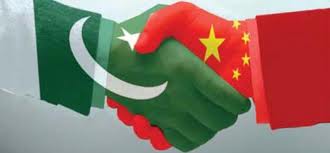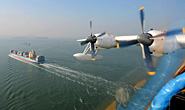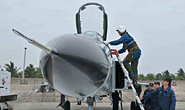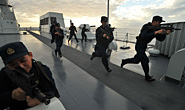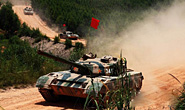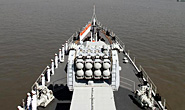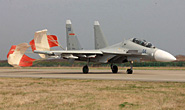Why is JF-17 Thunder a Real Threat by dm_50d9ab0679d41
THUNDER IN SINO-PAKISTANI RELATIONS
PUBLICATION: CHINA BRIEF VOLUME: 6 ISSUE: 5
Since the establishment of diplomatic ties in 1951, Sino-Pakistani relations have steadily deepened, and the two countries have never had a public disagreement over any bilateral, regional, or global issue. If there was any wrinkle in their mutual relations, it was amicably resolved in private, outside the view of the world’s eye. The key to this closeness has been the frequency of highest-level contacts between the two countries, which yielded unprecedented results. A case in point is the Chinese premier Wen Jiabao’s visit to Pakistan in April last year, which led to the signing of the “Treaty of Friendship, Cooperation, and Good Neighborly Relations” (Dawn, April 6, 2005). The treaty binds both signatories to desist from joining “any alliance or bloc which infringes upon the sovereignty, security, and territorial integrity of the other side” (Ibid.).
Similarly, General Musharraf’s third state visit to Beijing on February 19-23, which was a week apart from President Bush’s planned visit to South Asia in March, further strengthened the Treaty of Friendship, Cooperation, and Good Neighborly Relations. On February 20, China and Pakistan signed 13 agreements in Beijing, while President Hu Jintao and General Musharraf remained present at the signing ceremony. Of these, agreements on defense production, particularly the manufacture of multi-role JF-17 Thunder fighter aircraft, nuclear power generation, and strategic infrastructure-building, including the widening of the Karakorum Highway, are critically important to the future direction of Islamabad’s relations with Beijing.
Joint Defense Production: JF-17s
Nothing explains Pakistan’s Sino-centric relations better than its defense and strategic ties with Beijing. Since the 1970s, these relations have continued to deepen and widen with progressive expansion in defense cooperation. Joint defense production, however, peaked in the 2000s. Today, all three branches of the Pakistani military—land, air and navy (in that order)—are equipped with Chinese weapons systems. Taxila Heavy Industrial Complex, situated near Islamabad, was the first seed of mutual collaboration that sprouted to branch off into building components for air defense. As a result, a state-of-the-art Aeronautical Complex was built at Kamra, a small town in Attock district of the Punjab province. Most recently, Beijing has offered Islamabad a helping hand in building two frigates at its naval base in Karachi, which will be a landmark breakthrough in their joint naval defense production as well. General Musharraf, at the conclusion of his five-day visit to Beijing, declared that “defense relations have been the bedrock of Sino-Pakistan relations” (Dawn, February 25). The hallmark of their decades-long defense collaboration, however, is the joint production of JF-17 Thunder fighter aircraft, which General Musharraf described as a “great success.” He favorably compared JF-17s with the U.S. Air Force’s F-16 fighter jets “in platform engine, maneuverability, avionics and capability of carrying various modern weapon systems” (Ibid.).
JF-17s are being manufactured in Chengdu, capital of China’s Sichuan province. In 1999, Chengdu Aircraft Industry Company (CATIC) signed an agreement with the Pakistan Air Force (PAF) for joint production of JF-17s. Since then, CATIC, Chengdu Aircraft Designing Institute and the PAF have been working on this project. They rolled out the prototype of JF-17 on September 3, 2003, the test-flight of which satisfied both Chinese and Pakistani pilots. Almost two-and-a-half years later, General Musharraf watched the demonstration flight of the aircraft on February 22 when he visited Chengdu, Sichuan, which is China’s center of high-tech defense production. General Musharraf was so impressed by the manufacture of JF-17s that he had a Memorandum of Understanding (MOU) signed between China and Pakistan to declare Sichuan and Punjab (Pakistan’s most populous province that predominantly contributes “manpower” to the country’s three services) as “sister provinces” (Dawn, February 22). Pakistan is now celebrating JF-17s as worthy substitutes for F-16s.
Although Pakistan did receive 40 F-16s from the U.S. in the 1980s and is expected to receive an additional 80 F-16s this year, it still faces problems in their maintenance and service as its access to spare parts and manufacture technology is highly regulated (Dawn, February 25). This is what, Pakistan thinks, makes the U.S. an “unreliable” arms supplier, pushing Islamabad into the instinctive embrace of Beijing, which it considers an “all-weather friend” (Daily Times, February 24). Since 9/11, the U.S., however, has taken important measures to rebuild Pakistan-U.S. relations into longer-lasting cooperation. A case in point is Pakistan’s upgraded status as a major non-NATO ally of the U.S. to the perceptible unease of India, its arch rival. Yet Pakistan views such steps as symbolic as compared to the emerging strategic partnership between India and the U.S.
Nuclear Power Production
Pakistan is especially wary of the Indo-U.S. agreement on the transfer of nuclear power technology to Delhi, which is expected to be finalized during President Bush’s visit to India later this week. Since the signing of the Indo-U.S. nuclear agreement on July 18, 2005, when Indian Prime Minister Manmohan Singh made a state visit to the U.S., Pakistan has been lobbying the U.S. to allow it the same access to nuclear power technology, but to no avail. It is not just the ruling Republican Party in the U.S. that is averse to providing Islamabad with nuclear reactors; leaders of the Democratic Party are even more adamant on this issue. Senator John Kerry, who visited Pakistan this year on January 14-15, told a news conference in Islamabad: “India is a democracy and it has adhered to the non-proliferation agreement in all the years of its involvement with nuclear facilities. This is not yet true of Pakistan, though Pakistan is moving in that direction” (The Hindu, January 16). Pakistan is, nevertheless, pursuing a plan to generate 8,000 MW of electrical power from nuclear fuel by 2020, an ambitious plan that makes it look to Beijing for support.
Beijing has already provided Islamabad a 300-MW nuclear reactor (Chashma-I), which is sited in a small town—Chashma—of the Punjab province. Beijing has now agreed to provide another nuclear power plant—Chashma-II—which will be sited next to Chashma-I. It will take five years before Chashma-II becomes operational. In addition, Pakistan is in talks with Beijing to buy six to eight nuclear power reactors of 600 MW each over the next decade (Press Trust of India, January 3). If the talks are successful, Pakistan will buy a number of nuclear reactors at the cost $10 billion to produce 4,800 MW of electricity. Pakistan’s current production of nuclear power is just 425 MW (Ibid.). Although Pakistan denies any such talks, it did sign an agreement with Beijing on February 20 to further “deepen cooperation in peaceful application of nuclear power.” In addition, Pakistan and China signed an “energy cooperation framework agreement,” which will explore the possibility of a gas pipeline between Iran and China through Pakistan (Dawn, February 22).
Strategic Infrastructure: the Karakorum Highway
Besides, China and Pakistan are engaged in building key strategic infrastructures to further strengthen their defense ties. The construction of the Karakorum Highway (KKH)—which connects western China and its largest autonomous region of Xinjiang with Pakistan’s Northern Areas (NAs) all the way through Islamabad—was the first such major project. Since its completion in the 1970s, the Karakorum Highway has been used for limited trade and travel, however. In harsh winters, the stretch running through the Northern Areas and Xinjiang becomes unusable for motorized traffic due to heavy snowfall. Chinese and Pakistani engineers have since been trying to render it into an all-weather passageway. Yet limited trade and travel remained a poor incentive for such an expensive undertaking, until its renewed strategic significance became all too apparent in recent days. In a strict strategic sense, KKH is considered priceless. It gives Beijing unhindered access to Jammu and Kashmir in India, in addition to enabling it to the India’s movement along Aksai Chin, which China seized from India in 1962, severing India’s land-link to China’s turbulent autonomous regions of Tibet and Xinjiang. For Pakistan, the KKH is an added security for its turbulent Northern Areas, all the way up to Siachin where Indian and Pakistani troops have been in a stand-off since the mid-1980s.
On February 20, China and Pakistan agreed to widen KKH for larger vehicles with heavier freight. The rebuilding of KKH will enable China to ship its energy supplies from the Middle East from Gwader Port in Baluchistan through the land route of KKH to western China, which is its development hub. This alternative energy supply route will reduce Beijing’s dependence on the Malacca Straits. General Musharraf also wants to set up a “crude transit route” through Gwader Port for Beijing’s energy shipments from Iran and Africa. For this reason, Pakistan is building oil refineries, natural gas terminals, oil and gas equipment, and transit facilities in Baluchistan. China has agreed to help Pakistan with its plans for the development of its oil and gas industry. With this planned elaborate energy infrastructure, KKH has assumed an added significance as an alternative land link between China and its energy sources, of which Iran sits atop.
Beijing and Tehran are now all set to sign a $100 billion agreement on developing Iran’s Yadavaran oil field in southern Iran as early as March this year (Reuters, February 17). Under this agreement, China will buy 10 million tons of Liquefied Natural Gas (LNG) from Iran each year over the next 25 years. KKH would be the shortest and safest land route to ship Iranian LNG to western China. In return for LNG, China will develop the Yadavaran oil field, which is estimated to have three billion barrels of oil and is expected to produce about 300,000 barrels of oil per day, which is equivalent to China’s current imports from Iran (Ibid.). General Musharraf wants to turn Pakistan into China’s “energy corridor” for Chinese energy imports from the Middle East, Persian Gulf and Africa (Daily Times, February 18). He also wants Pakistan to be China’s “trade corridor” for its exports to Central Asia. For the latter reason, Pakistan has recently built the Torkham-Jalalabad road in northwestern Pakistan (i.e., Pakhtunkhaw province) and Chaman-Kandahar railroad link in Baluchistan to carry Chinese manufactured goods to Central Asia through Afghanistan.
China generously recognizes General Musharraf’s contribution to forging even closer relations between Beijing and Islamabad. It also wants Pakistan to play a bigger role in the region, for which General Musharraf has asked Beijing to upgrade Pakistan’s observer status at the Shanghai Cooperation Organization (SCO) to full membership. China will notify all SCO member states of Pakistan’s request to consider it at the SCO’s scheduled summit meeting this year (Dawn, February 20). To honor his contribution and his visit to Beijing, China put General Musharraf’s face on its postage stamps, which is a rare gesture even by Chinese standards.
Conclusion
Defense and strategic ties are the bedrock of Sino-Pakistan relations, which are too solid for any hint of weakness. Their ambitious future agenda for high-tech defense production (such as JF-17s and Frigates), nuclear power generation, and strategic infrastructure building (such as KKH and deep-sea Gwader Port) will further energize their ties. Although Sino-Pakistan relations have flourished under all military governments in Islamabad, General Musharraf has taken them to even greater heights by signing a territorial defense treaty in April last year, and literally and metaphorically putting (JF-17) “thunder” in Sino-Pakistan relations.
Sale of JF-17 Thunder jets to start next year
![]()


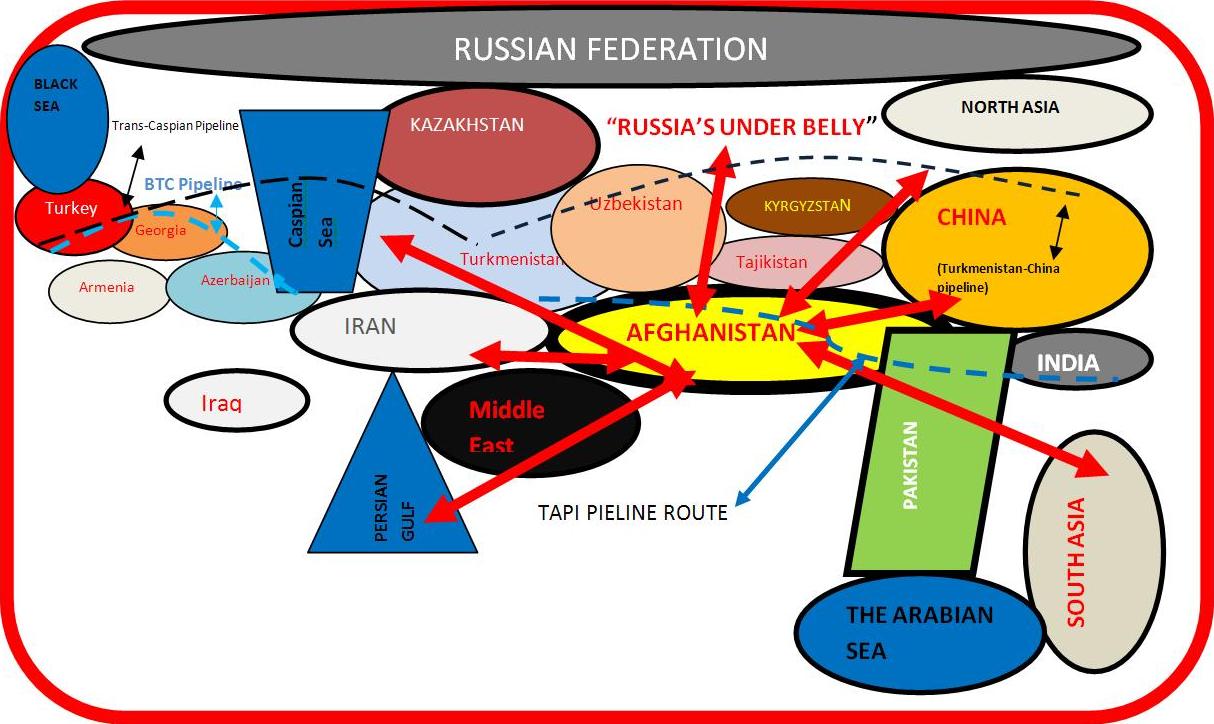

 Hangor (Daphne) Submarine
Hangor (Daphne) Submarine Hashmat (Agosta 70) Submarine
Hashmat (Agosta 70) Submarine Khalid (Agosta 90B) Submarine
Khalid (Agosta 90B) Submarine


